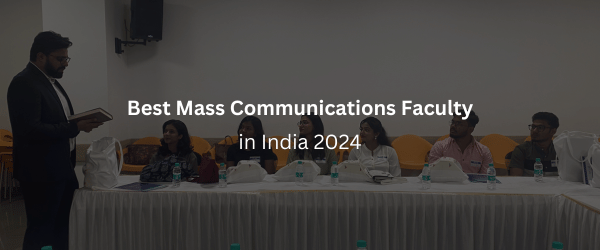
Social media influencers as a catalyst in Public relations
June 25, 2018Employees can be great leaders
July 2, 2018In the last two decades Public Relations as a career choice has come a long way. While some of the things Public Relations focuses on in the west (mainly USA and UK) are different from that in India most aspects are similar. The difference lies in the application of technology and the impetus on digital.
Public Relations is as old as human life and as old as the epics, the holy scriptures and civilization. However, if we were to focus on the structured world of Public Relations, it began to take shape after the second world war in the west and in India after liberalization in 1991, almost forty years later.
An interesting definition of Public Relations is a management function, which tabulates public attitudes, determines the policies, procedures and interests of an organization… followed by executing a program of action to earn public understanding and acceptance. In simple terms Public Relations is managing reputation. The longer definition takes into account research that leads to insights in order to a plan a campaign that can be executed to achieve desired results and then measured.
However, because the structured part of Public Relations is still very young as a profession in India it is still mistaken for media relations. Also, because corporates have an upper hand and a larger status in comparison to PR consulting firms, corporate communications is considered to be a bigger playing field. On the contrary Public Relations is the all-encompassing umbrella of which communications is one spoke, the others being corporate responsibility, employee engagement and most importantly good corporate behavior.
Typically, companies that are passionate about their reputation ensure that the chief executive or chairperson has a direct oversight over the reputation piece. Therefore, there will be a head of communications who may or may not have a seat at the high table but in case of the latter the big boss for all practical purposes is the one at whom the reputation buck stops.
In India, PR companies – which work like consulting companies or a law firm began to take shape in the early 90s with the advent of multinational companies who wanted to soft land in the sub-continent. Most firms were home-grown enterprises run by individuals who transitioned from other corporate jobs including journalism, marketing, publishing among others. That is why even today, of the Top 10 firms in India, six are still run by the Founders, despite four of them (GBM, Perfect, Ketchum Sampark and Avian Media), being acquired by international PR firms. The other three have seen exits of the founders and are run by professional CEOs who interestingly are not business management post-graduates (MSL, Edelman, Weber Shandwick) which is not a pre-requisite. The largest firm is an Indian firm called Adfactors with its Founders still at the helm and the only firm in the Top 10 which was launched without an acquisition is Text 100.
All these firms have grown leaps and bounds to offer much more than what they did when they started out. Today, they have evolved to offer public affairs, investor relations, design, media training and much more. In the past there was a clear demarcation between paid media (advertising) and earned media (public relations). The lines have blurred with the onslaught of social networks and the fight for every marketing dollar by holding group linked companies and independent shops.
Public Relations is largely about four Cs – content creation, connecting with stakeholders, crisis management and counselling on reputation. Almost, all of what Public Relations does falls into one of these four brackets. With the advent of digital, the way content is created, the approach to connecting stakeholders, even the manner in which crises are prepared for and mitigated are a lot different from what it was a decade ago. The one thing that has not changed is the counsel and advice senior PR practioners continue to offer leaders – be it in business, politics, society. PR has also learnt to charge a fee from clients based on a scope of work linked to the time that is budgeted. Even methods of measuring a PR campaign have greatly improved from pure-play measurement of paper cutting to a more holistic way of looking at a return on objectives.
Salaries have also seen a drastic sea-change for the better. Salaries for freshers have doubled from what they were a decade ago. And there are atleast two dozen professionals who draw an annual salary upwards of Rs 1 crore, something that was unheard of until a decade ago unless one was an expat.
Today, graduates from multiple disciplines including law, medicine, engineering are opting for Public relations as a career where they super-specialise based on their domain expertise. This has increased the scope for youngsters to choose from a new career option.
Ultimately, it all boils down to how well can one manage expectations and influence good corporate behavior. If one can do both, then Public Relations is a great career path and it has indeed come a long way.
This article first appeared in Hindustan Times in May 2018
-Amith Prabhu

Amith is the Dean of the School of Communications & Reputation (SCoRe)- A post graduate institute of Public Relations built by the Indian PR community. He is also the founder of the PRomise Foundation which organises PRAXIS, India’s annual summit of reputation management professionals. He can be reached at @amithpr on twitter.




